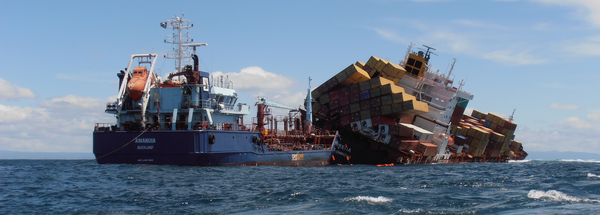Rena update (update 76)

5 November 2011: 10.30am
Work on removing oil from the engine room of the cargo vessel Rena and onto the tanker Awanuia is progressing well, Maritime New Zealand (MNZ) says.
A pumping operation to remove these oils from a centralised tank on Rena began yesterday afternoon and has continued overnight.
MNZ Salvage Unit Manager Kenny Crawford said the oils were a mixture of lubricants, hydraulic oils and heavy fuel oil, situated in a number of different tanks around the engine room.
“Most of them are very light and do not pose the same environmental risk as the heavy fuel oil, which has been the salvage team’s priority from day one,” Mr Crawford said.
“However, it is important these oils are removed as well – it’s very pleasing to see this progressing so well.”
Salvors have removed over 1000 tonnes of heavy fuel oil off the ship, and there are 358 tonnes of heavy fuel oil remaining on board in the submerged number 5 starboard tank.
Mr Crawford said work on the “hot tapping” of the starboard tank was also making good progress.
To hot tap the tank, a hole is cut into the fuel tank through a flange attached to the deck. Water is then pumped into the fuel tank, raising the oil to the top, so it can be extracted.
Mr Crawford said salvors were continuing to pump sea water into the tank this morning.
“It’s a slow and steady process,” Mr Crawford said.
National On Scene Commander Alex van Wijngaarden said the oil spill response team continued to ensure its readiness to respond to a significant release of oil.
However, there had been no significant release since around 22 October when between 5 and 10 tonnes seeped from the vessel.
“We have rapid strike teams ready to respond to any reports of oil and we are also continuing to assess shorelines and clean-up where needed.”
